Whitewater rafting on the Pacuare River in Turrialba, Costa Rica, is considered one of the top whitewater rafting destinations in the entire world. Go and search the top ten whitewater rafting spots; it’s on most lists.
This class IV river cuts deep through a thick jungle and offers one of the top elevation drops per distance. There is, after all, a reason why the Pacuare River has played host to the World Rafting Championship.
Where is the Pacuare River?
The main launch point for any whitewater rafting on the Pacuare River is Turrialba, Costa Rica, a small town located in the central valley of the Cartago province.
The Pacuare River is an 80.2 mile stretch of water that descends the eastern slopes of the Irazu Volcano toward the Caribbean Sea.
The lower section, which I ran, flows for about 23 miles (37 km) and drops approximately 1,200 feet (370 m) from Finca La Cruz to the town of Siquirres.
I remember when I showed up at where I was staying, Hostel Pacuare. The first thing the woman asked was if I would be rafting. This seemed to be a common assumption when people show up in Turrialba.
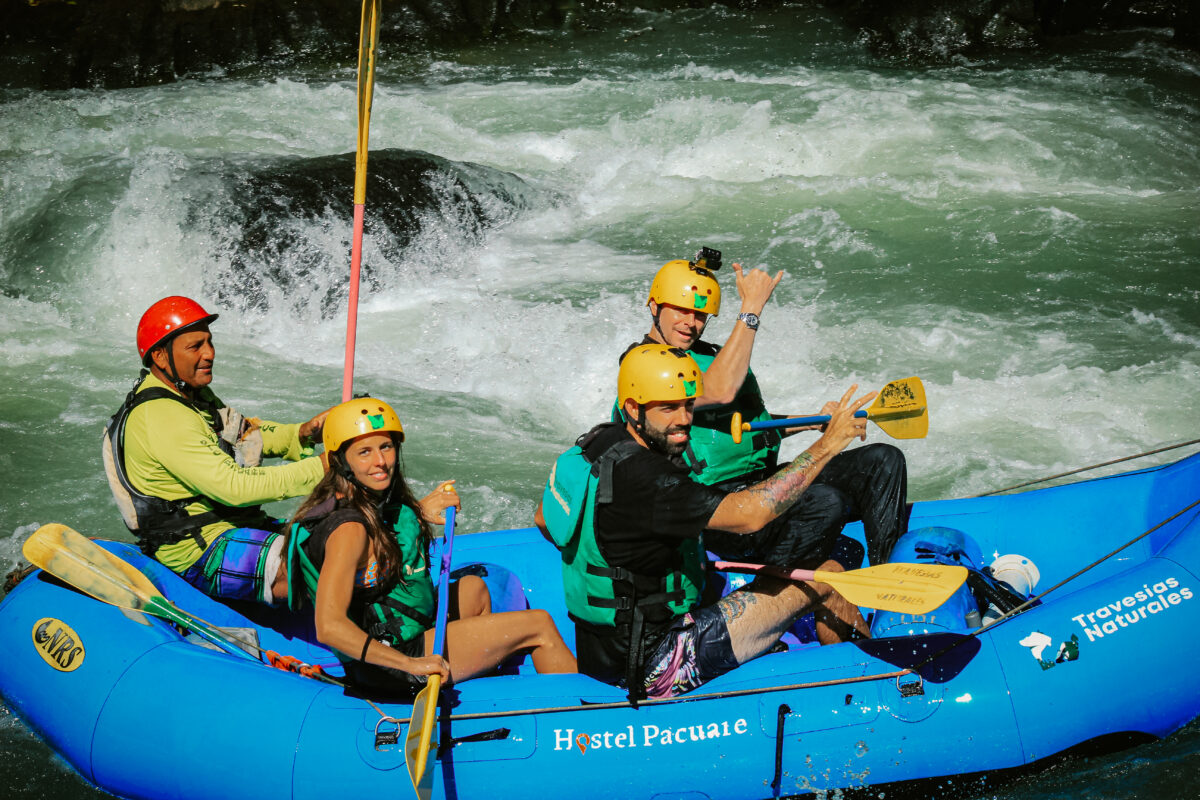
Travesías Naturales
There are many companies in town that run whitewater rafting trips on the Pacuare River. There are so many that I didn’t bother to book something in advance. I just showed up.
Before doing the same, and this applies to everything, know that there is always the risk of not finding an operator. My schedule was super fluid my entire time in Costa Rica. I woke up and said, “Well, I guess I’ll finally head down and do some whitewater rafting in Turriabla today.”
This was two days after I had initially planned ongoing. I was just enjoying La Fortuna too much. Had there been no trips available, I would have just moved on and doubled back.
The company I ended up using was Travesías Naturales. This is a smaller, local operation that was run out of my hostel. Sure, there were obviously larger operators, but in my opinion, smaller family-owned experiences are generally better for something like this.
The owners live right on the first floor. They even took my breakfast order through their living room window. It doesn’t get much more family-centric than that!
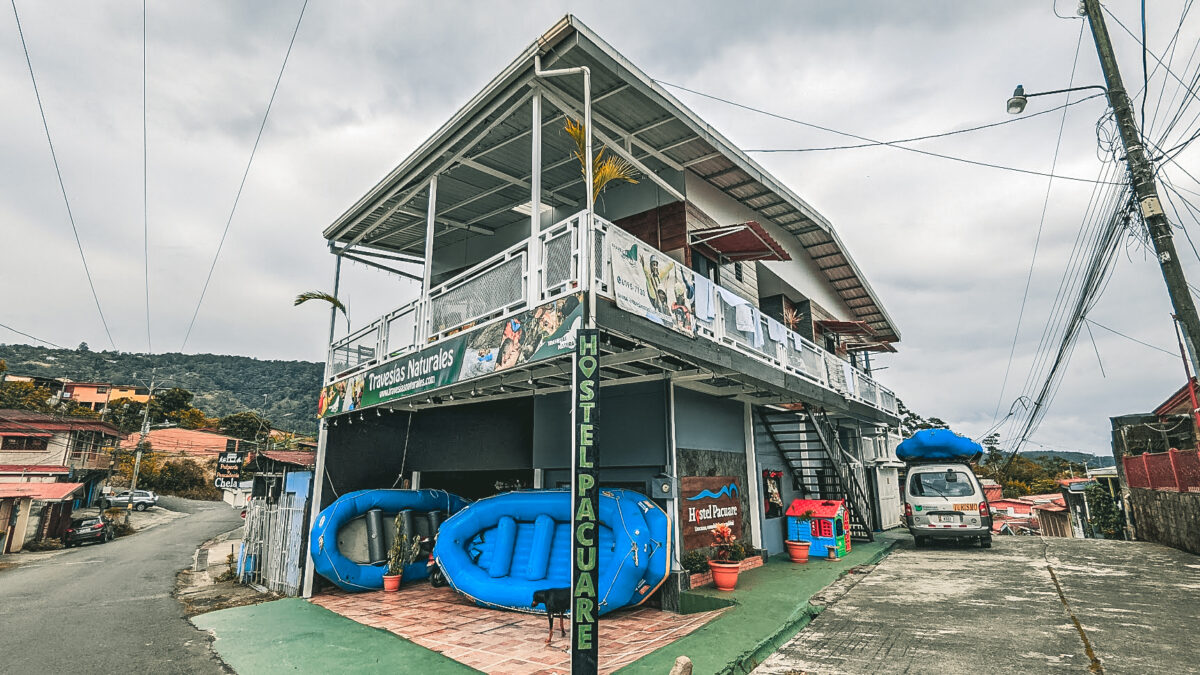
I’m never a morning person except for when I travel!
Morning came early after a night of listening to some college girls on the balcony try and fail in their attempts to sing the alphabet for an extended period of time. (Seriously.) *I remember my first beer.*
After waking up at around 6:30 AM, I threw all of my stuff into my bag and got dressed for a day on the river.
Since I had no plans for the night and didn’t anticipate staying in Turrialba, I left my bag in the trunk of my car at the hostel.
Departure from the hostel was at 7:00 AM. I was joined by two others on the adventure, but they opted to follow us to the river in their own car. Following from behind like they did can be helpful, depending on the direction you’re headed after you’re done.
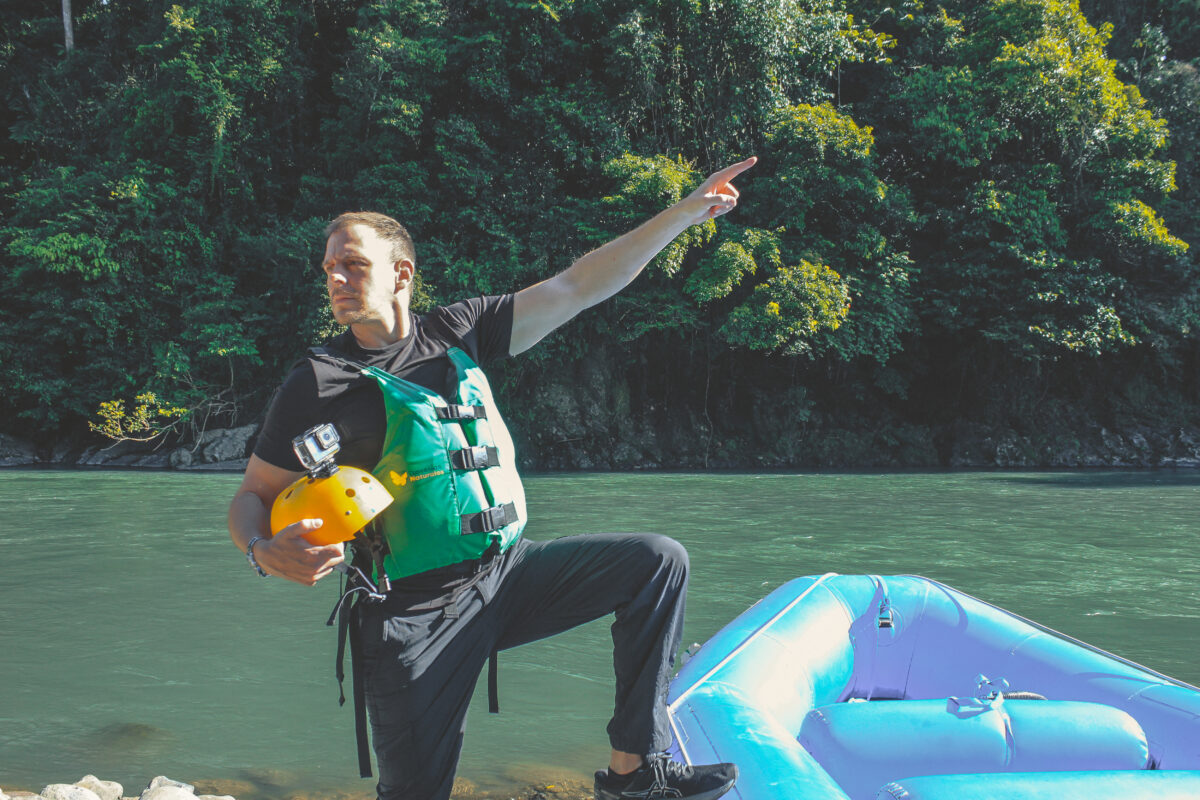
Heading to the Río Pacuare
From Turrialba, it was a forty-five minute drive to the launch point.
We shared some light conversation along the way, with the main point of conversation being my rafting experience. I’m no pro, but I told them I’d been whitewater rafting on the Upper Gauley River in West Virginia.
There was a lot of “Gauley” and nodding to each other by the crew. They were satisfied that I’d be able to manage.
Things moved fast at this point as the three of us were fitted with helmets and lifejackets before a safety briefing.
The briefing consisted of the verbal commands the guide would be shouting, how to properly sit in the raft, and what to do if someone fell in the water.
After that, it was onto the river.
As we got settled and found our rhythm, a second guide in a whitewater kayak darted ahead of us. His job was to set up at the major rapids and take pictures as we battled our way through them.
He ended up taking around one hundred pictures and some video which was available to purchase for $20. I bought them. I feel that whenever someone is taking these pictures, you should always get them.
Quality is always hit or miss, but the angles can’t be beat!
These rafting pictures came out quite well.
But the grainy video I bought in Luxor, Egypt? That’s a completely different story! Remember though, by purchasing these, it’s not all about you, you’re also supporting the local economy.
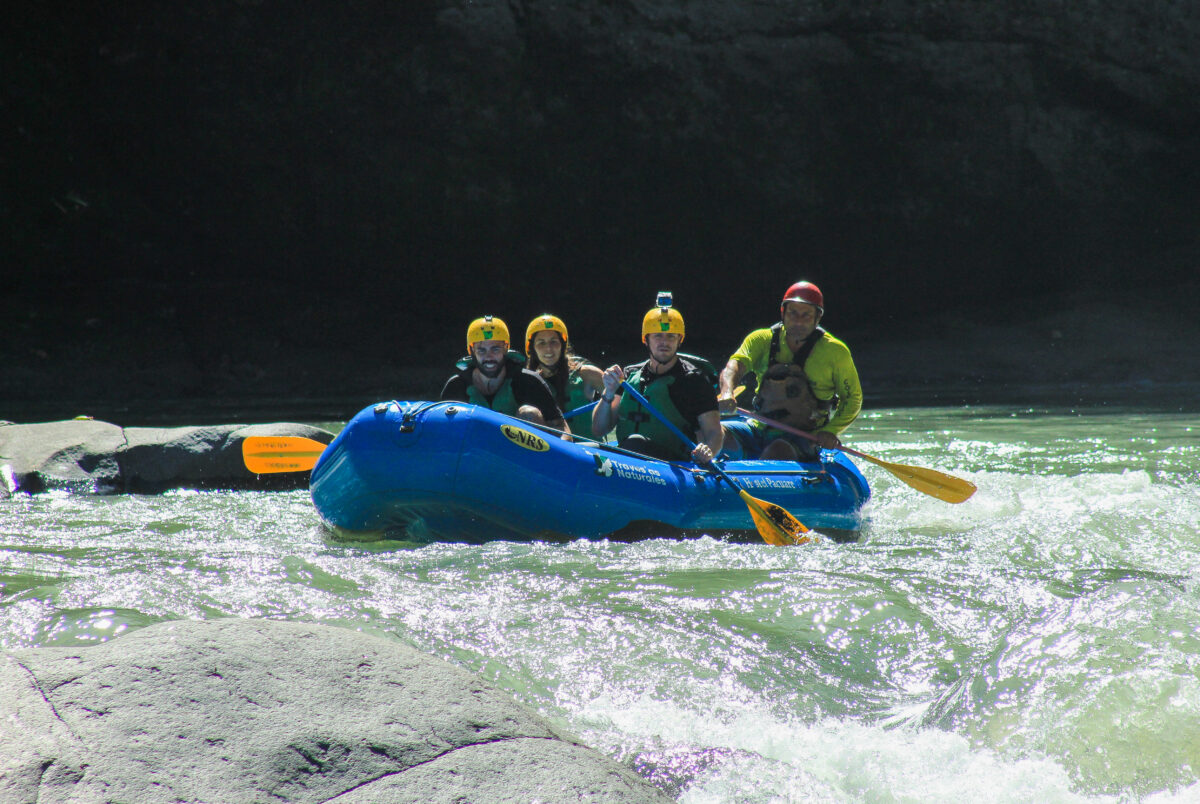
Whitewater Rafting the Pacuare River!
The rapids came up quick and remained fairly persistent throughout the three and a half hour paddle-fest. As we went through them, our guide was shouting almost non-stop. Paddle! Paddle! Stop! Back Paddle! Push it hard!
Okay, that last one was actually me. I yelled “Push it hard!” about four or five times over the course of the river. Ever seen The River Wild?
Some other yelling that went on was the names of the different rapids because if there’s one truth in the world, it’s that if something exists, humans will give it a name, and these rapids had some good ones.
The rapid names do change over the years as the river is reshaped, but some of the mainstays are Doble Piso, Upper Huacas, Lower Huacas (naturally), Upper and Lower Pinball, Guatemala, Cimarrones, and Dos Montañas, which is the final class IV.
I can’t remember which was my favorite, but Upper Huacas is a good contender for the title because the raft goes right under a waterfall at the finish. That was such a cool experience!
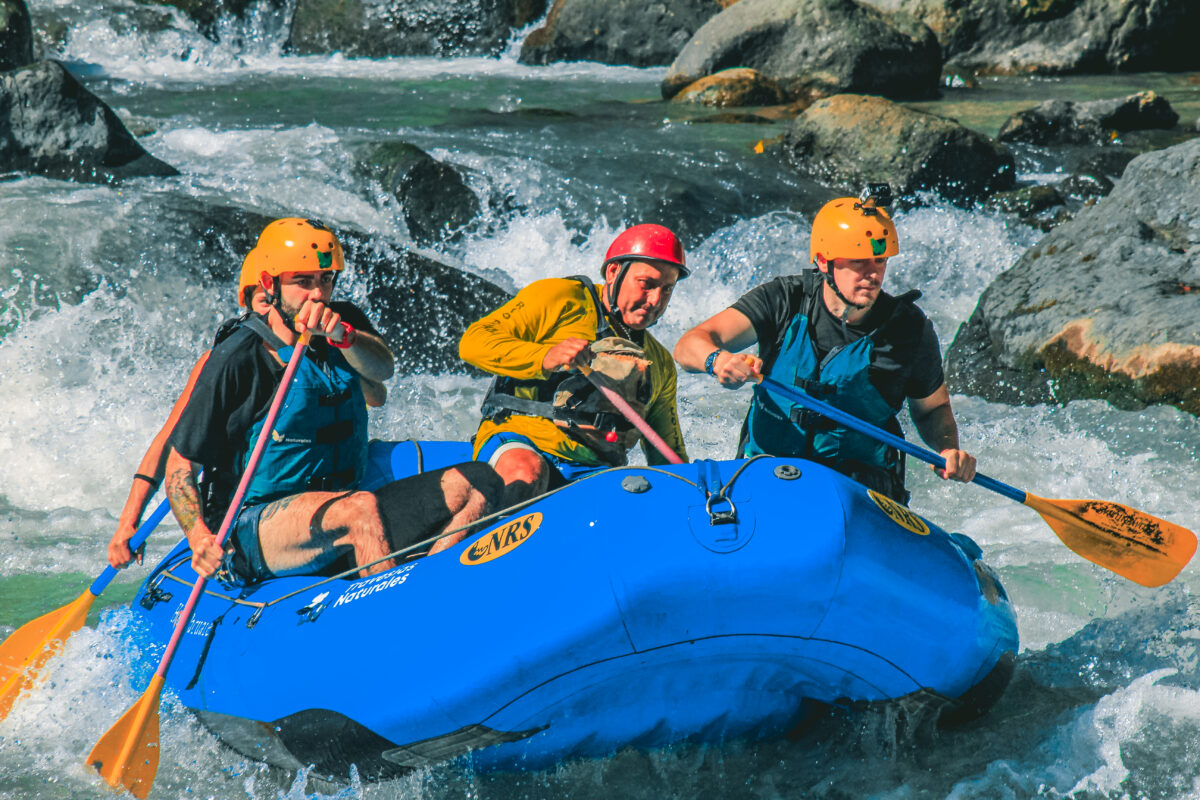
Waterfalls galore
At around the halfway point, we stopped and hiked inland a bit to see a beautiful waterfall. Here, we took a swim beneath it and ate some fruit. Ya know, I had been wondering why there was a pineapple tied to the back of the raft!
The waterfall was pretty fun and a nice little break from paddling. Unfortunately, when I went for my swim, I took the plastic bag with my extra battery and SD card out of my pocket but forgot to close said pocket. Goodbye tip money! I lost it all!
Don’t worry, I still tipped them when I made it back to my car and was reunited with my wallet.
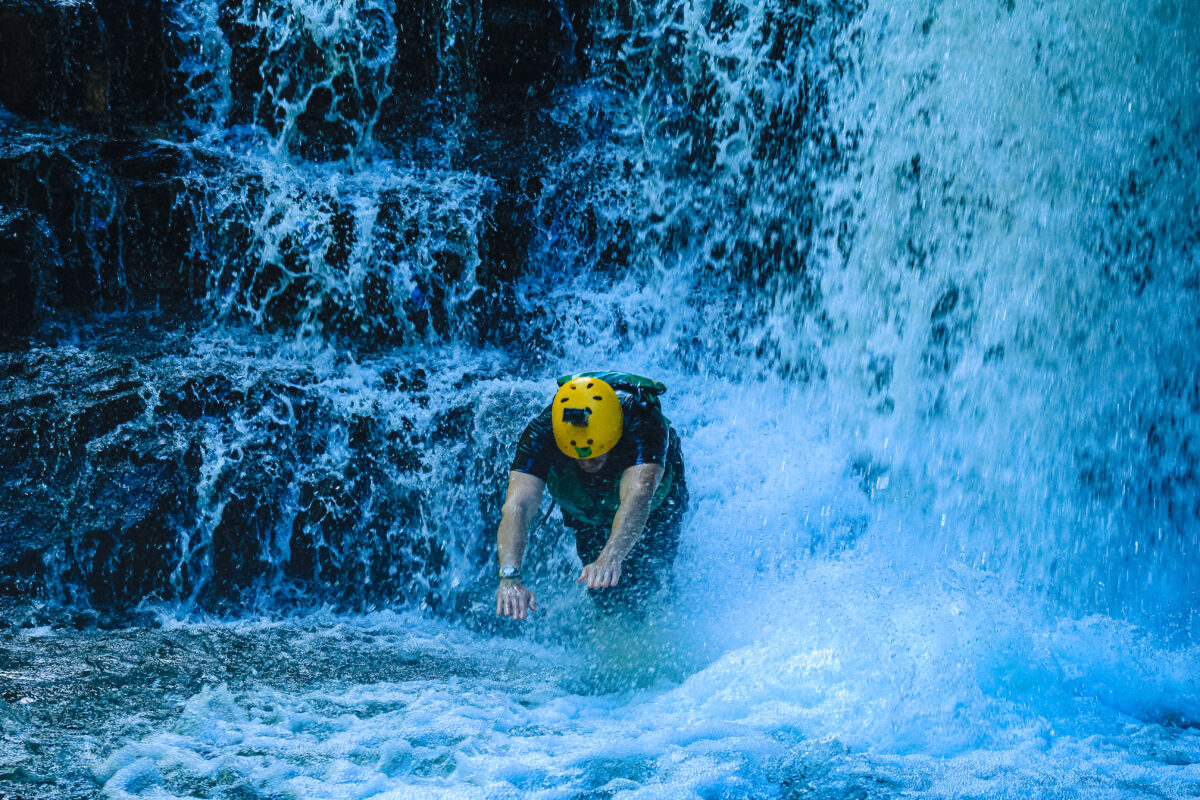
The Calm of the River
The flat-water stretches were some of the most tranquil views I’d seen in a while. It was like something right out of an Indiana Jones movie. Or the movie Congo, which according to my guide, was partially filmed in the area.
This stretch included an extremely steep canyon gorge with water spraying down its sheer walls. Ahh, how I wish I had a functioning camera.
By this point, both of my GoPro batteries were dead. Even before they died, my GoPro kept overheating due to the near-constant shooting of 4K video. This is why I always recommend at least three GoPro batteries, but I somehow managed to lose one prior to my trip.
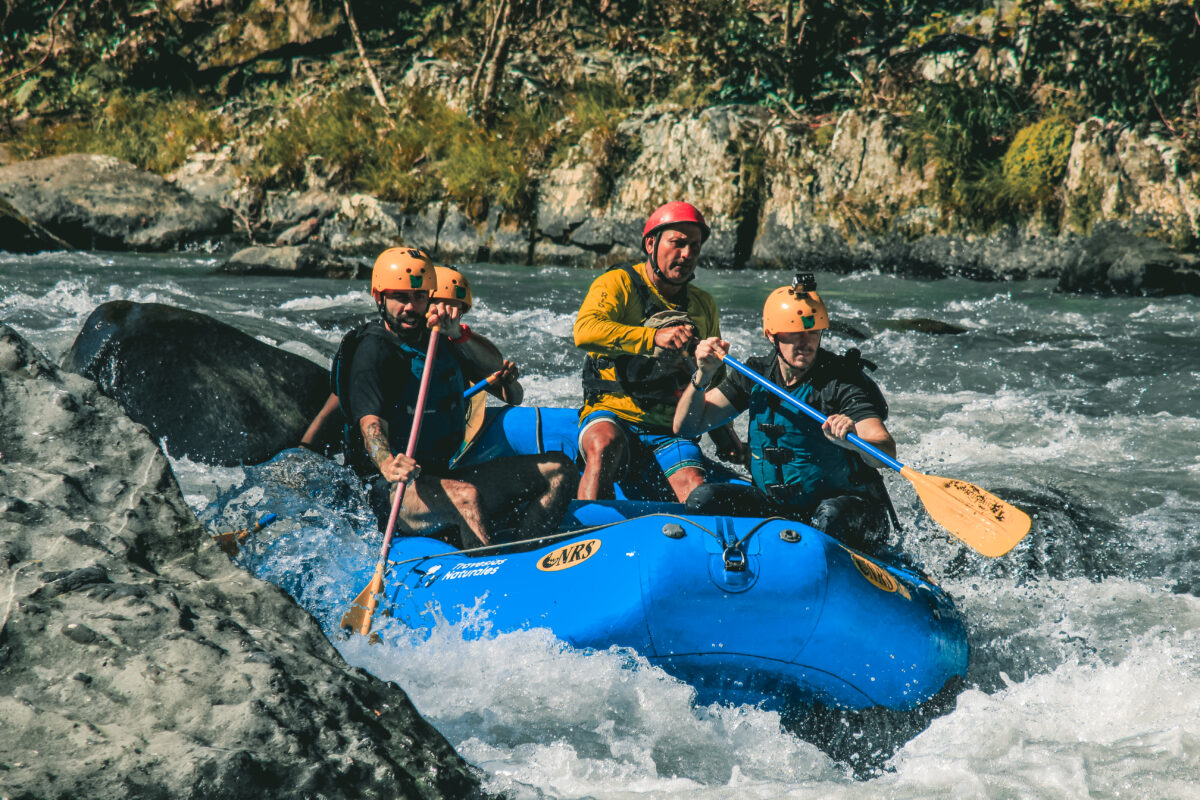
The water was so warm!
Towards the end of the run, the opportunity to hop into the emerald waters for a dip was presented. Don’t worry; there are no jungle monsters lurking in the Pacuare River, only fish.
I asked. It is a jungle, after all.
I just wish that this opportunity had presented itself more than once, as we passed multiple rope swings that had been set up by the locals. I asked if I could try each one, but unfortunately, my guide laughed and waved me off. Damn! I love me a good rope swing, and these had some height!
A nice thing about this being Costa Rica was that the water felt incredibly warm compared to most rivers I’ve been in. I remember when I shot the Upper Gauley River, we needed to wear wetsuits. I had on a 4/3 and was still shivering at points!
After our little dip, we were about done for the day.
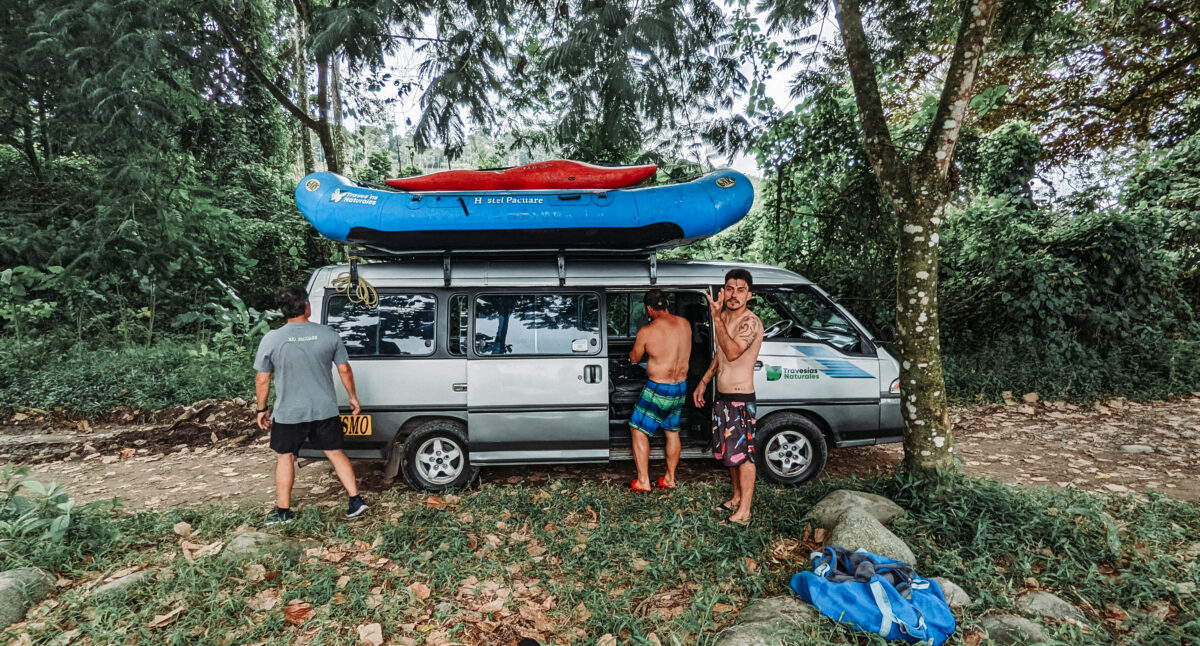
We floated up to the riverbank near the small town of Siquirres, where our van was waiting to pick us up.
After walking into the jungle for some privacy, I changed into some dry clothes that I had left in the van. This was a little more difficult than it should have been, due to everything wanting to get me muddy or bite me.
We then all piled in and headed into town, where we were treated to a traditional lunch. It was here where I realized that I let my money all go floating away.
Cost
So how much did it cost to go white water rafting on the Pacuare River?
Using Travesias Naturales as I did will run you $69 for the one-day trip ($99 for two people) and $250 for the two-day trip.
I found these prices to be very reasonable and right in line with the competition.
Just don’t forget to tip! Losing your money in the river is no excuse. Oof.
Whitewater Rafting the Pacuare River in Turrialba was a solid experience. One that I definitely wouldn’t mind repeating! So much so that I’ve decided that I’ll be taking up whitewater kayaking this summer. Stay tuned!
DID YOU ENJOY THIS ARTICLE? PIN IT!
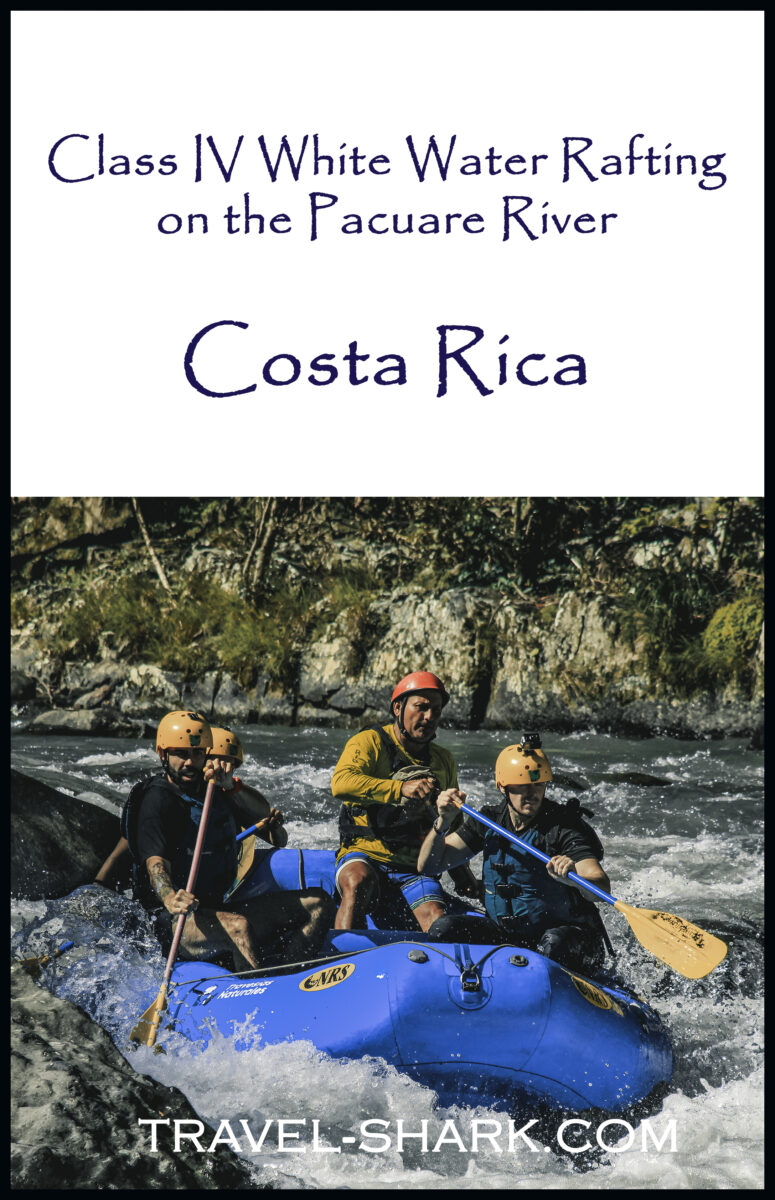
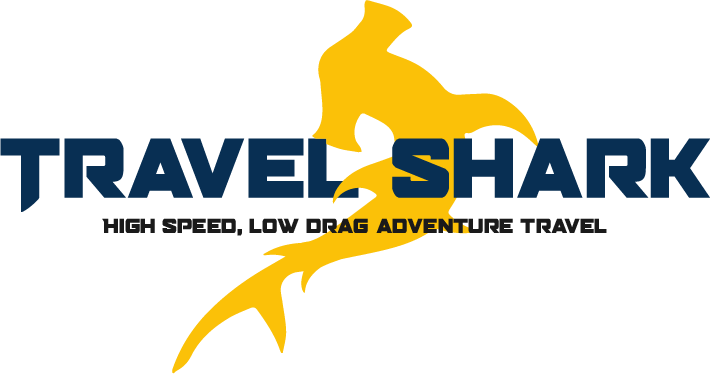
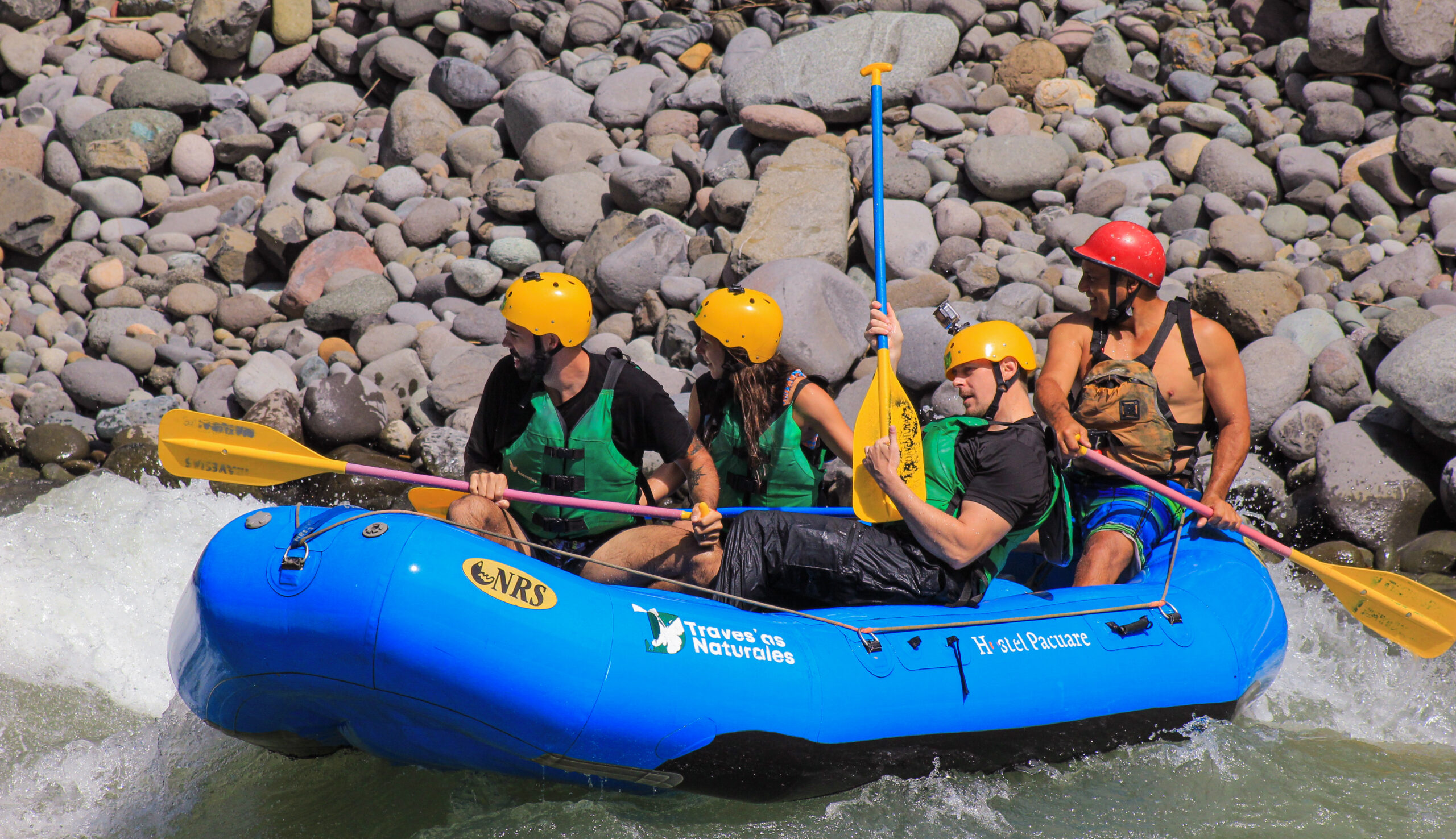
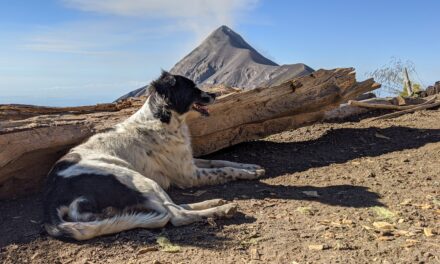
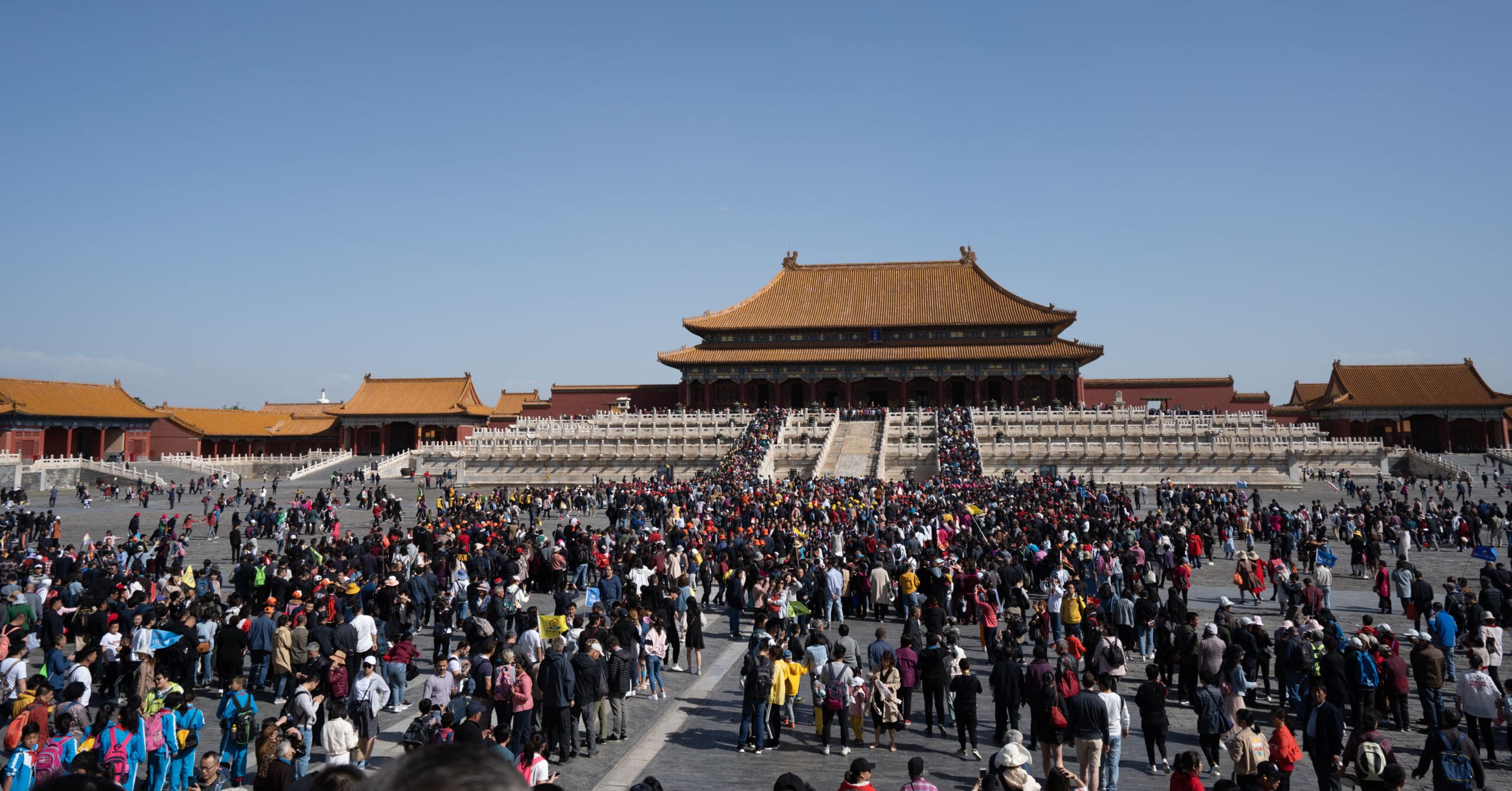
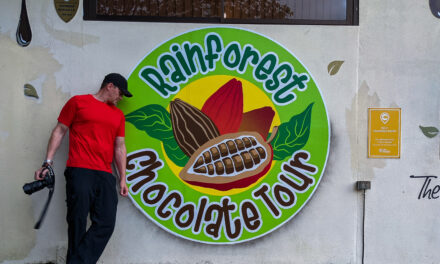
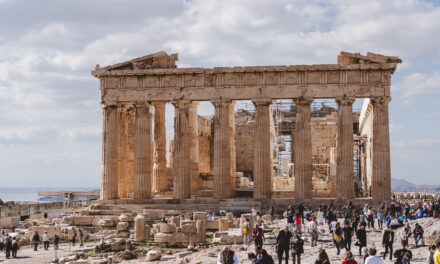

Hi Pat. I have enjoyed reading this blog… so vivid, detailed and interesting.Unfortunately, I don’t think I have it in me to do river rafting. Keep up the entertaining blogging.
-Selina
Thanks for reading Selina! You never know! There is less extreme rafting in other areas like La Fortuna that are still very fun. And you got it, more blogs coming!
[…] I had to do, with one of them being canyoneering in Costa Rica. The other two activities were White Water Rafting on the Pacuare River and scuba diving with manta rays at the Catalina […]
[…] The main draw to Jinja, though (after the Source of the Nile River) is the whitewater rafting scene. Rafting on the White Nile River, not to be confused with the Nile, is absolutely amazing. I thought it was better than rafting on the Pacaure River in Costa Rica. […]
I enjoyed reading your article. I rafted the Pacuare back in 2019, just before the pandemic, and had a blast. I just returned from Costa Rica, 11/9/23, with the intent to raft the Pacuare again. This time the water level was too high for a safe trip and our rafting company took us on an alternate dam controlled river. Great experience there as well. I would recommend to you and your readers to try the Sarapiqui River, as it too has class 3 & 4 rapids. I did this trip from La Fortuna. May not be as scenic as the Pacuare, but will rival it in thrills and adventure. Thanks
The Sarapiqui looks awesome! I was in La Fortuna for a few days but missed out on this one. Wish I had known lol I’m planning on going back eventually so I’ll definetly check it out. Thanks!